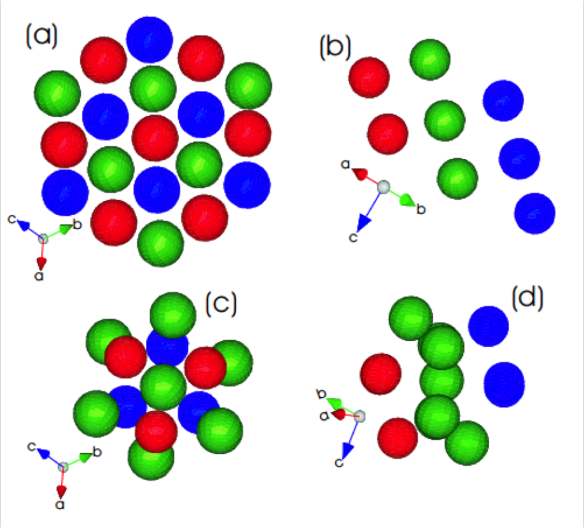Methane under pressure – the structure of Methane A
What does it look like?

(a) and (b) are how the methane molecules pack in the cold form methane I. (c) and (d) are how they pack in the high-pressure methane A.
What is it?
It's hard to imagine methane as a solid. We're all so used to it as an (odourless) gas, where too much of it is having catastrophic consequences on our atmosphere. But if you cool it down to –161 °C it will freeze and become a bit of a strange plastic solid – similar to frozen argon. Part of this strange behaviour is because the methane molecules are spinning, and so they are pretty much spherical in shape and pack like a box of ping-pong balls.

Methane A, with all of the hydrogen positions placed in.
But what if instead of cooling it, you decided to squeeze it? Well, it would freeze, first to the same plastic solid you get by cooling it down. But, keep squeezing and it undergoes a dramatic transformation to the structure above. Known as methane A (in contrast the solid you form by cooling methane is called methane I) this a solid that doesn't quite know what to do with itself. The molecules want to close pack, but are stopped from doing so because the hydrogen atoms repel each other. This leaves this 'distorted' close packed structure, which has a much more complicated repeating unit than the first cold methane form.
Why squeeze it at all? Well though methane on Earth is found mostly in the atmosphere, on the gas ice giant planets, Uranus and Neptune, its a material that makes up a massive amount of the planet. The hope is that, with a better understanding of crystal structures of methane at high pressure, we can understand lots more about these planets.
Where did the structure come from?
This structure was the blood, sweat and tears product of the crystallography 365 blog co-ordinator's PhD work, and is published here. To find it involved a number of trips to both synchrotron (first to find where the carbon atoms were) and later neutron diffraction facilities (to track down where each of the hydrogens are). Like the other high-pressure structures we've featured on the blog so far, the only way to produce these pressures in the laboratory was with a diamond anvil cell. Though, for the neutron diffraction measurements where bigger samples are needed, a super–sized version of this had to be used!






